Artificial Intelligence (AI) is reshaping how makers, hobbyists, and small workshops approach CNC routing. From brainstorming project ideas and writing macros to optimizing toolpaths and preventing collisions, AI now supports nearly every stage of the workflow. This guide explains how to use standalone AI tools (like ChatGPT) alongside AI-powered CAM features (such as Carveco AI) to work faster, reduce mistakes, and unlock new creative possibilities—without losing the craftsmanship that makes CNC so rewarding.
Why Use AI in CNC Routing?
- Speed & efficiency: Automate repetitive tasks (feeds/speeds lookup, file prep, basic G-code edits) and reduce trial-and-error.
- Creativity on tap: Generate concepts, textures, patterns, and 3D relief ideas you might not have considered.
- Better outcomes: AI-assisted toolpaths can shorten cycle time, improve surface finish, and minimize waste.
- Lower learning curve: Guided explanations and step-by-step help make advanced techniques more accessible.
Think of AI as a “smart co-pilot.” You still make the decisions—AI helps you get there faster and with fewer surprises.
Using Standalone AI Tools (ChatGPT, Image Models, Code Assistants)
Standalone AI tools operate outside your CAD/CAM stack. They’re ideal for ideation, research, documentation, and problem-solving. Here’s how they can supercharge your CNC projects:
1) Brainstorming & Concept Development
- Idea generation: Ask for project lists tailored to your work area, materials, and router (e.g., “Give me 20 giftable CNC projects for a 300×180 mm bed in maple or birch.”)
- Design directions: Request parametric concepts (modular trays, stackable organizers) or product niches for small-batch sales.
- Aesthetic styles: Prompt pattern ideas (Art Deco, Celtic knots, geometric tessellations) to apply as pocketing or V-carves.
2) Learning & Documentation
- Explain toolpaths: Ask for plain-English breakdowns of pocketing vs. adaptive clearing, or how climb vs. conventional cutting affects tear-out.
- Feeds & speeds guidance: Get suggested starting points for a given bit, material, and DOC/WOC strategy (always verify with manufacturer data).
- G-code & macros: Generate boilerplate M-codes for spindle warm-up, probe routines (if supported by controller), or job start/end sequences.
3) Design Assets & Visuals
- Image-to-vector workflows: Use an image model to create motifs, then trace to SVG for CAM. Clean up vectors in your CAD tool before machining.
- Texture libraries: Ask for heightmap ideas (normal/greyscale patterns) to convert into 3D reliefs.
4) Troubleshooting & Support
- Diagnostics: Get step-by-step checklists for common issues (Z not reaching depth, lost steps on Y, chatter in hardwood).
- Post-processor hints: Guidance on mapping outputs to GRBL/Mach3/UCCNC behaviors.
Practical Prompt Starters
- “Suggest feeds/speeds starting points for a 6 mm 2-flute upcut in hard maple on a hobby CNC. Include RPM, DOC, and step-over. Explain your rationale.”
- “Generate a parametric idea for a modular desktop organizer cut from 12 mm birch ply. Include joints and assembly notes.”
- “I’m getting ridges on a 3D relief finishing pass with a 3 mm ball nose. What should I adjust first?”
Tip: Treat AI outputs like a seasoned shop buddy’s advice—use them to inform, then verify on scrap and refine with your own experience.
AI-Integrated CAM Software (Carveco AI, Generative & Smart Toolpaths)
Modern CAM tools embed AI to automate judgment-heavy steps: recognizing features, choosing strategies, optimizing toolpath order, and simulating for safety. You stay in control—AI speeds the busywork and highlights risks.

Carveco AI
Carveco AI brings intelligence to relief carving, toolpath planning, and finishing:
- Relief-aware machining: Automatically detects sculpted regions and suggests rough/finish sequences suited to curvature.
- Strategy recommendations: Proposes step-downs, stepover, and bit changes for faster cycles with consistent finish.
- Predictive checks: Flags areas prone to tear-out or chatter; suggests smaller tools or alternate passes.
- Surface smoothing: Smart scallop and raster adjustments to minimize witness lines on 3D reliefs.
Carveco AI is especially compelling for sign makers, furniture detailers, and anyone producing ornate 3D panels who wants quality results with fewer passes and less sanding.
AI & Smart Features in Other CAM Tools
- Generative & optimization tools: Automatically create lightweight forms and lattices for functional parts (then routeable with appropriate strategies).
- Adaptive clearing & rest machining: Adjusts tool engagement dynamically to clear material safely and quickly.
- Feature recognition: Identifies pockets/holes/slots and proposes efficient sequences and tool groupings.
- Collision & holder checks: Simulates the stock, tool, and holder to prevent crashes—critical for deep pockets and tall features.
Bottom line: Integrated AI in CAM shortens programming time, improves consistency, and catches issues before you blow a workpiece.
Where AI Fits in the CNC Workflow
- Inspiration & planning: Use ChatGPT for project lists, material choices, hardware sourcing, and BOM outlines.
- Design: Start with AI-generated motifs, convert to vectors, and build parametric CAD that’s easy to adjust.
- Toolpathing: Let Carveco AI (and similar features) propose strategies, then tweak for your machine, bits, and stock.
- Simulation: Rely on AI collision checks and material removal previews to validate jobs.
- Cut & iterate: After test cuts, ask AI for tuning advice (feeds/speeds, finishing passes, sanding/grain direction tips).
Standalone AI vs. AI-Integrated CAM (Quick Comparison)
| Aspect | Standalone AI (e.g., ChatGPT) | AI-Integrated CAM (e.g., Carveco AI) |
|---|---|---|
| Primary Role | Ideation, documentation, troubleshooting | Toolpath strategy, optimization, simulation |
| Learning Curve | Very low (chat-based) | Moderate (inside CAM workflow) |
| Outputs | Text, lists, code snippets, concepts, images | Ready-to-run toolpaths, verified strategies |
| Strengths | Fast idea generation & knowledge support | Cycle-time reduction, finish quality, safety |
| Limitations | Doesn’t output CAM-ready toolpaths; must be interpreted | Tied to specific software; requires license & setup |
Real-World Workflow Example (From Prompt to Finished Part)
- Prompt & scope: In ChatGPT, ask for “a wall-mounted key holder with a mountain motif, 12 mm birch ply, 300×150 mm max, 30-minute cut time.” Get a materials list, bit suggestions, and mounting hardware ideas.
- Design: Generate a simple mountain silhouette with an image model or request SVG points in ChatGPT. Import into your CAD tool, add dog-bone fillets for slots, and parametrize thickness.
- CAM with AI: In Carveco AI (or similar), accept suggested rough/finish passes for the relief, then adjust stepover to hit your target cut time. Use AI checks to identify thin walls or risky tool engagement.
- Simulate: Run removal and collision checks. If tool/holder clearance is tight, have AI recommend a tapered ball nose or different step-down.
- Cut: Run a test in scrap. If edges fuzz in birch, ask AI for compression bit settings or post-sand workflow (grit sequence, sealer).
- Iterate: Time the cut and feed results back into ChatGPT: “I need 20% faster—what stepover/RPM/DOC change preserves finish?” Adjust and recut.
High-Impact AI Use Cases for CNC Shops
- Custom signage: Ask AI for font pairings, layout rules, and material/finish combos for durable outdoor signs.
- Furniture joinery: Get parametric joint suggestions (finger/bridle/mortise-tenon) with tolerances for your bit set and plywood thickness.
- Relief carving: Use AI to propose finishing pass strategies and ball-nose sizes that minimize scallop height.
- Production optimization: Let CAM’s AI reorder toolpaths to reduce tool changes and travel distance in small-batch runs.
Tips for Adopting AI Without Losing Craft
- Start small: Use AI for documentation and planning before trusting it with toolpaths.
- Validate everything: Dry run, air cut, simulate, and test on scrap—especially with new bits or aggressive settings.
- Keep a shop notebook: Record what AI suggested vs. what worked; build your own “house standards.”
- Stay in control: AI helps, but your eye and experience decide the final pass.
Challenges & Limitations
- Context & accuracy: Chat tools don’t “see” your machine. Provide specifics (router model, bit, material) and sanity-check outputs.
- Data & privacy: Avoid sharing sensitive drawings in public models; use local/on-prem options if your work is confidential.
- Over-automation: Don’t skip fundamentals—understand why feeds/speeds work before pushing limits.
- Licensing costs: AI features in CAM may require higher-tier plans. Budget for value, not novelty.
Quick Wins You Can Try This Week
- Ask ChatGPT for a feeds/speeds starting matrix for your three most-used bits in your favorite material.
- Generate five SVG pattern ideas for coasters or wall art; import and cut a small batch.
- Use Carveco AI (or your CAM’s smart strategies) to reduce finishing time on an existing 3D relief job by 15%.
- Prompt a post-processing checklist (tool change, probe, dust control, vacuum hold-down) and pin it beside your machine.
Conclusion
AI won’t replace your craftsmanship; it multiplies it. Standalone tools like ChatGPT accelerate planning, learning, and creative exploration. Inside CAM, AI features—like those in Carveco AI—turn experience into repeatable, optimized strategies that reduce cycle time and improve surface quality. Together, they shorten the path from idea to finished part while keeping you in control.
Start small, validate often, and treat AI as a collaborative shop assistant. With smart adoption, you’ll ship better work, faster—and open the door to projects you once thought were out of reach.
Build Smarter. Cut Faster. Create More.
Try AI prompts for your next project and explore AI-assisted CAM strategies in your tooling. When you’re ready to scale, pair your workflow with a stable, precise CNC platform for consistent results.
- Test AI prompts for feeds/speeds, fixtures, and finish strategies.
- Trial Carveco AI (or your CAM’s intelligent toolpaths) on an existing job.
- Create a reusable AI-aided setup checklist to standardize your shop workflow.




